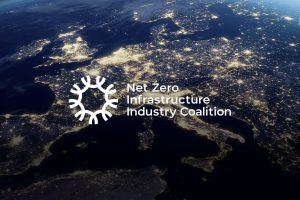Civil nuclear power directly employs over 77,000 people in the UK and is worth £6.1bn to the economy, but the value is so much more than that. Add in the social value that the sector delivers and the benefit to the economy more than doubles to £16bn when you consider all the indirect impacts.

Caron Dunlop is technical director for social value in UK & Europe at Mott MacDonald
However, maximising this social value doesn’t happen by chance – it needs to be carefully planned to deliver the greatest potential and this will be essential as the UK pushes ahead with adoption of small modular reactors (SMRs).
The introduction of SMRs into the UK presents a massive, once-in-a-lifetime opportunity to shape our social, economic and environmental landscape for generations to come. The obvious benefits come from meeting the UK government’s ambition to reach net zero by 2050, ensuring energy security and creating new employment opportunities; however, the social impact of this new technology could be much broader as a result of its development away from traditional centres of nuclear knowledge.
Where the new sites will be is yet to be confirmed. Great British Nuclear (GBN) has started technical review of the competition bids from the five shortlisted firms vying for backing to develop the UK’s first SMRs.
Although it may not be until later this year when the locations and successful bidders are revealed, taking a look at the conventional civil nuclear industry can act as a guide to understand the potential societal impact, as well as what needs to be done to maximise the social value from the SMR investment.
There are lessons on social value planning and delivery that we can learn from the nuclear power investments over the last decade with Hinkley Point C in Somerset and Sizewell C in Suffolk, both now in the construction phase. The Nuclear Decommissioning Authority (NDA) programme to decommission and clean up 17 sites across the UK has also given us valuable best practice to learn from.
A look at the increased benefits driven by Hinkley Point C demonstrates the importance that having a robust social value delivery strategy can have on a major project. With all supply chain partners, contractors, and local stakeholders working together, such projects can create positive change for people, businesses, and communities.
The Hinkley Point C social value results are impressive, there is no doubt about it. EDF Energy’s 2023 report on the project highlighted that 1,320 apprenticeship roles have been created and the work has supported over 22,000 people in sustainable, well-paid jobs. The project also reported that £24M has been directly invested into local education, skills and employment opportunities, that 30,000 training places have been delivered, and that £15M has been invested in local community programmes.
GBN’s SMR competition will open up these potential benefits to deprived and disadvantaged areas in the UK; but it is not enough to assume that this new investment will have a positive social impact if a conscious, concerted, and focused approach is not taken.
By developing a strategy which enables social value to cascade through and be fully embedded throughout project lifecycles, the sector can ensure that partner organisations are engaged. This approach delivers investments that are focused and results in maximised outcomes for communities.
The focus on delivering the best results for communities needs more than “box-ticking”. It means moving away from short-term thinking and ensuring that actions have long-term impact and that everyone plays their part. The average duration of a UK nuclear project from design and construction through to operation and decommissioning spans decades, though evidence indicates that the socio-economic impact to local communities extends far beyond this.
So how do we capture, plan, deliver, measure and grow from these major projects to ensure they are changing lives, creating vibrant, inclusive communities where people and businesses thrive?
Using Policy Procurement Note 06/20, wider social, environmental and employment legislation, along with the NEC Clause X29, sets out a standard approach to social value and gains specific commitments on a tender by tender (short-term) basis. These policies and legal requirements help to embed social value into procurement.
However, four years after social value became mandated through these policies, there is still a great deal of work to do. The industry is still challenged with what ‘good’ looks like, maturity levels are still poles apart, and measuring the impact remains a mystery to many.
To be truly transformational, SMRs need to go beyond the business-as-usual legislative levers and get creative. Investing in a robust, long-term social value strategy that will be fully inclusive, clear, right, relevant, and proportionate is needed, with focus on industry-wide collaboration, engagement, communication, and connectivity.
- Caron Dunlop is technical director for social value in UK & Europe at Mott MacDonald
Like what you've read? To receive New Civil Engineer's daily and weekly newsletters click here.
 New Civil Engineer Civil engineering and construction news and jobs from New Civil Engineer
New Civil Engineer Civil engineering and construction news and jobs from New Civil Engineer




Have your say
or a new account to join the discussion.